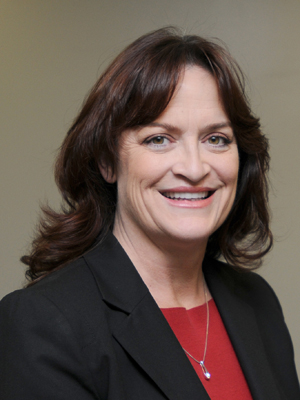Roadmap for STEM
Costa Discusses Preparation for Math, Science Teachers
As someone who always wanted to teach and who now leads the science education programs at Cal State Fullerton, Victoria B. Costa knows firsthand what it takes to become a science teacher.
Costa, along with two Cal State Fullerton teacher credential students, are presenting best practices about the university’s science, technology, engineering and mathematics, or STEM, teacher recruitment and preparation programs at today’s California State University summit “Transformative Change in the Preparation of Teachers” in Irvine.
Costa’s presentation, “Roadmap of STEM Teacher Recruitment and Preparation,” focuses on how Cal State Fullerton prepares STEM teachers, as well as her own story about her lifelong passion to teach science.
STEM is one of this year’s university initiatives.
What is your “roadmap” to STEM teacher preparation?
I’ve combined five ideas: get teacher candidates involved, provide inspiration, engage candidates in inquiry, provide necessary information and partner for innovation in efforts to promote, develop and engage future STEM teachers. I’m calling these the “I-5” roadmap — after California’s main highway. Our teacher preparation programs have implemented successful strategies in each of these areas.
What are these successful strategies?
For example, we offer a variety of fellowships, scholarships and internships for future STEM teachers. Our candidates have completed internships at national laboratories, as well as local informal science education agencies.
We provide science and math teacher candidates with instructional resources, test fees and specialized mentoring and advisement. These strategies provide inspiration for future STEM teachers.
In our education courses, we focus on inquiry-based learning strategies, offer minors in natural science or mathematics to undergraduates interested in teaching science or math at the middle school, and engage our teacher candidates in digital interactive tools and media to support development of their math and science knowledge and skills.
We also have wonderful partners — both with local school districts and community colleges — and with business and industry. Examples include NASA, Intel Education, Discovery Science Center and Project Tomorrow. Through these partnerships, our teacher preparation programs are able to develop 21st century STEM teachers who are innovators and change agents in their schools.
How are you implementing this “roadmap” to STEM teaching?
The heart of our teacher credential programs is that we have great teacher education faculty who continue to inspire future STEM teachers through modeling effective teaching and mentoring teacher candidates. As mentors, we strive to be “pied pipers” for teaching, in general, and STEM teachers, in specific. We also continue to identify ways to inform students of opportunities and options to help them along their pathways of becoming teachers.
What are students’ options in STEM teaching?
In California, K-12 teachers need to be knowledgeable of their content area and also prepared to address the needs of a very diverse student population. Undergraduates who are considering a STEM teaching career have multiple pathways to choose from at Cal State Fullerton. They might choose to earn their degree in science or mathematics and then enter the single subject credential program. Alternatively, students may choose to pursue a multiple subject credential route, which would qualify them to teach in K-6 classrooms.
Feb. 14, 2011
 Victoria B. Costa
Victoria B. Costa